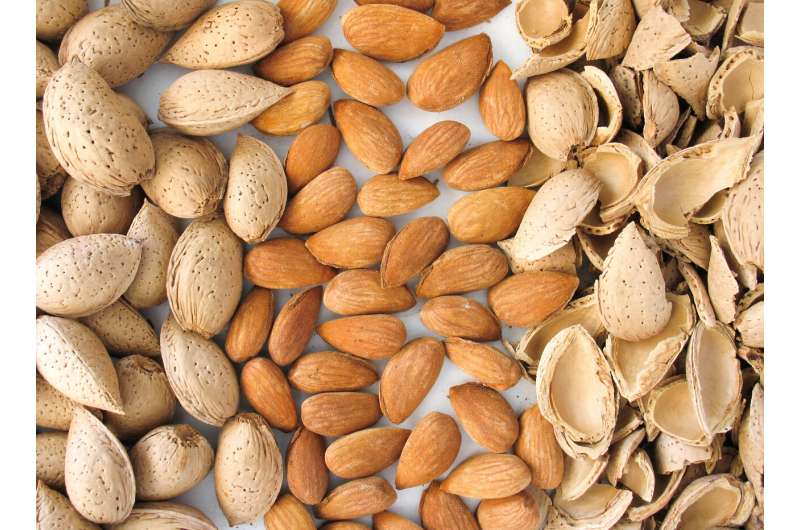June 17, 2019 report
Sequencing the almond reveals how it went from bitter to sweet

A team of researchers with members from Spain, Switzerland, Denmark and Italy has found the genetic difference between bitter wild almonds and the sweet domesticated variety. In their paper published in the journal Science, the group describes how they sequenced the almond genome and then compared sections of it in bitter and sweet varieties until they found the sequence that was different.
Almonds have had a place in the human diet for thousands of years, even before they were cultivated and sweetened. Passages in the Bible, for example, note the bitterness of the nut. Eventually, though, mention was made in early writings of Greek breeders inserting chunks of pine into the trunks of almond trees, resulting in sweeter fruit. It is now believed that doing so stressed the trees, preventing them from producing amygdalin—the toxin responsible for the bitter taste. In this new effort, the researchers sought to find the genetic differences between bitter and sweet almonds.
The work by the team involved sequencing the genome of the almond and then studying differences between varieties to determine which part of the genome was responsible for producing amygdalin. As it turned out, this was no easy feat. The researchers wound up studying and comparing the different varieties over the course of two years. Eventually, they found what they were looking for: a protein called bHLH2. They found that in wild almond trees, bHLH2 binds to two genes, instigating the production of amygdalin. In sweet domestic varieties, there is a mutated version of bHLH2 that is not able to bind with the genes, thus, production of amygdalin does not occur.
Growing and selling almonds is big business—recent statistics show that California alone exported approximately 2.35 billion pounds of the nuts last year. The researchers believe their findings will help almond growers become more efficient. Currently, nature sometimes interferes with human cultivation efforts, allowing some almond trees to grow with the wild version of bHLH2—but farmers are not able to identify them until they grow to produce fruit. Now, they can be tested as soon as they sprout to identify those that will eventually produce bitter nuts.
More information: R. Sánchez-Pérez et al. Mutation of a bHLH transcription factor allowed almond domestication, Science (2019). DOI: 10.1126/science.aav8197
Journal information: Science
Provided by Science X Network
© 2019 Science X Network


















